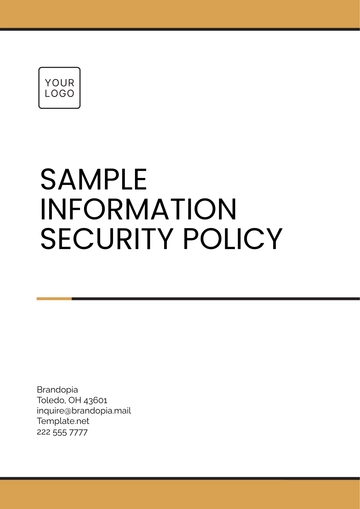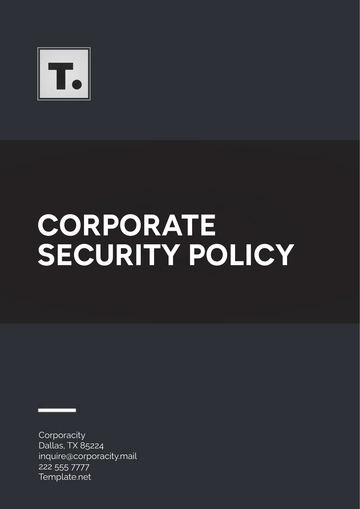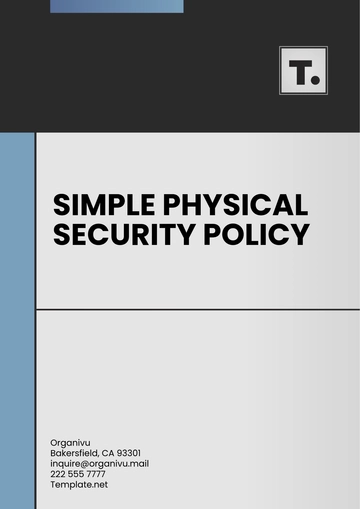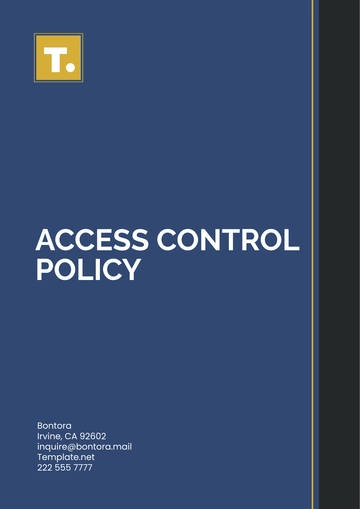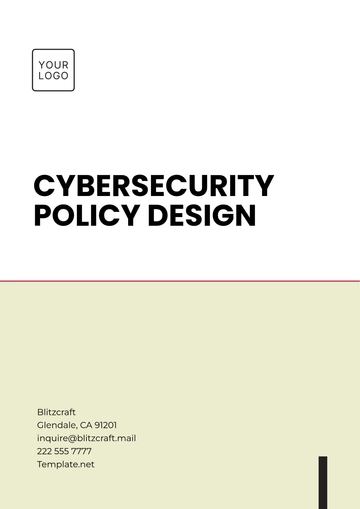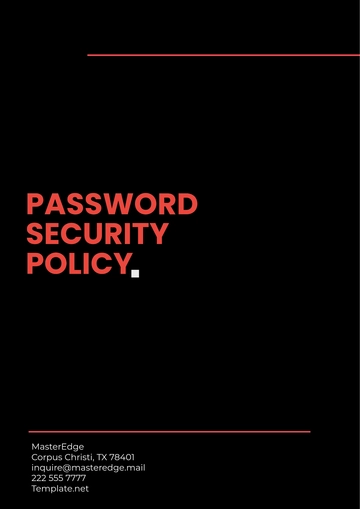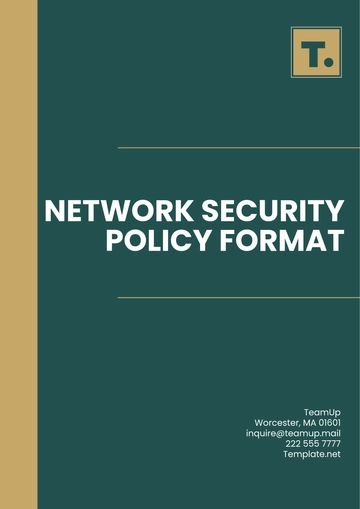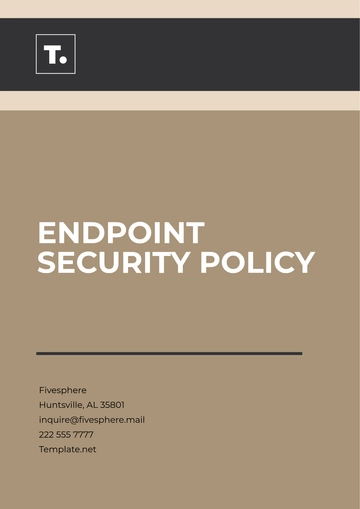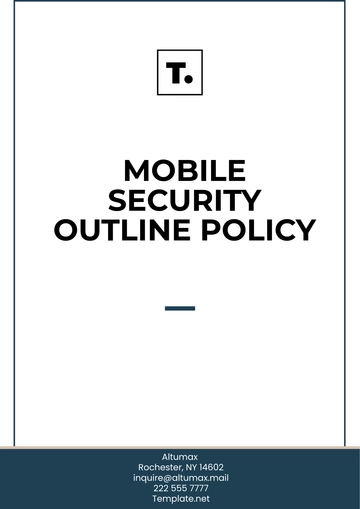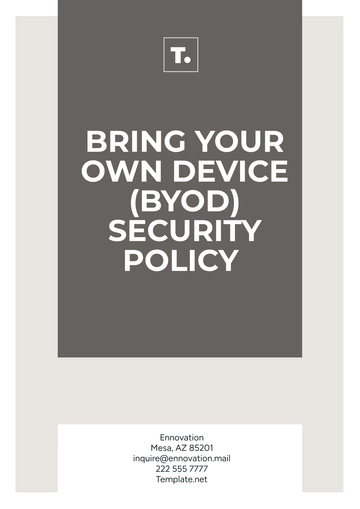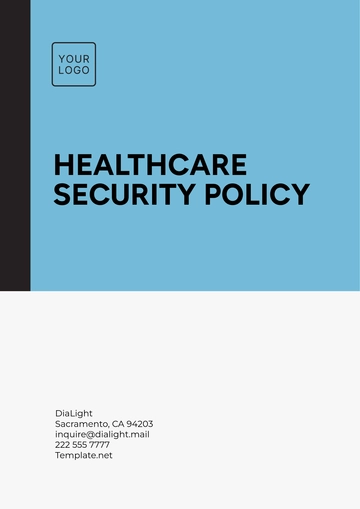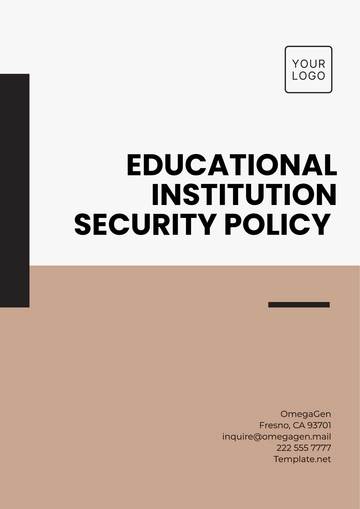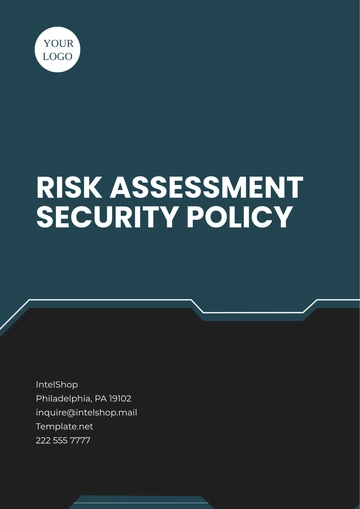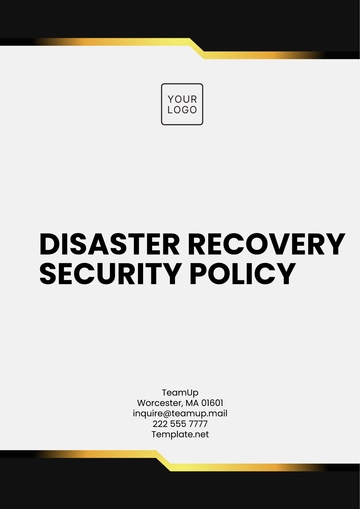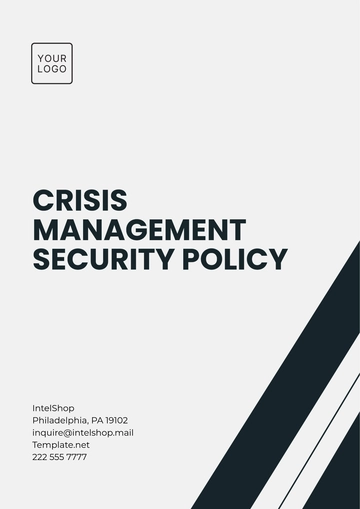Free Operations Cybersecurity Policy
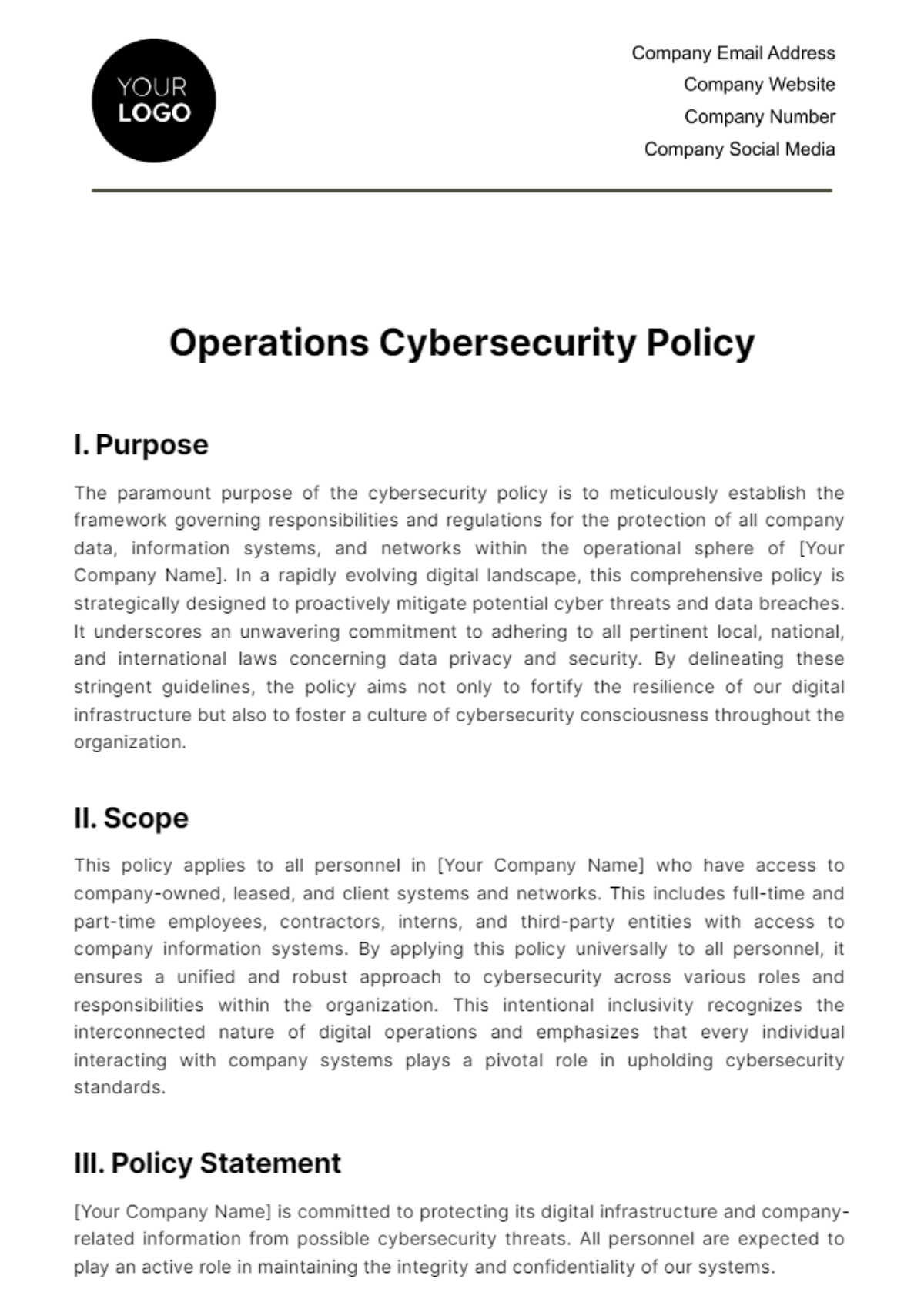
I. Purpose
The paramount purpose of the cybersecurity policy is to meticulously establish the framework governing responsibilities and regulations for the protection of all company data, information systems, and networks within the operational sphere of [Your Company Name]. In a rapidly evolving digital landscape, this comprehensive policy is strategically designed to proactively mitigate potential cyber threats and data breaches. It underscores an unwavering commitment to adhering to all pertinent local, national, and international laws concerning data privacy and security. By delineating these stringent guidelines, the policy aims not only to fortify the resilience of our digital infrastructure but also to foster a culture of cybersecurity consciousness throughout the organization.
II. Scope
This policy applies to all personnel in [Your Company Name] who have access to company-owned, leased, and client systems and networks. This includes full-time and part-time employees, contractors, interns, and third-party entities with access to company information systems. By applying this policy universally to all personnel, it ensures a unified and robust approach to cybersecurity across various roles and responsibilities within the organization. This intentional inclusivity recognizes the interconnected nature of digital operations and emphasizes that every individual interacting with company systems plays a pivotal role in upholding cybersecurity standards.
III. Policy Statement
[Your Company Name] is committed to protecting its digital infrastructure and company-related information from possible cybersecurity threats. All personnel are expected to play an active role in maintaining the integrity and confidentiality of our systems.
A. Network Security
Firewall Protection: Robust firewalls are strategically implemented to create a formidable defense, preventing unauthorized access and ensuring the security of network systems.
Intrusion Detection/Prevention Systems: Advanced systems are deployed to actively monitor and thwart unauthorized access or malicious activities, safeguarding the organization's digital assets.
Vulnerability Assessments: Regular and meticulous assessments are conducted to identify potential weaknesses or vulnerabilities within the network infrastructure.
Prompt Vulnerability Remediation: In the event of identified vulnerabilities, immediate and targeted actions are taken to address and rectify these issues, enhancing overall network security resilience.
B. User Access
Authorization Restriction: Access to sensitive systems is rigorously restricted, ensuring that only authorized personnel with explicit permissions can interact with critical information.
Secure User Accounts: Individual user accounts are fortified with security measures, ensuring that access to sensitive information is conducted through secure and traceable means.
Two-Factor Authentication: The mandatory implementation of two-factor authentication adds an additional layer of security, enhancing access controls and minimizing the risk of unauthorized access.
C. Incident Response
Response Plan Development: A comprehensive incident response plan is meticulously developed, detailing the organization's strategy to address and mitigate cybersecurity incidents promptly.
Regular Plan Updates: The incident response plan undergoes consistent updates to remain adaptive to emerging cyber threats, ensuring that the organization is well-prepared to respond effectively.
Quick and Effective Response: The organization places a premium on its ability to respond swiftly and effectively to any cybersecurity incidents, minimizing potential damages and ensuring a rapid return to normal operations.
D. Regular Audit
Internal and External Audits: Periodic internal and external audits are conducted, assessing the organization's adherence to cybersecurity principles and ensuring alignment with industry standards.
Review and Validation: The outcomes of audits are rigorously reviewed and validated, providing insights into the organization's cybersecurity posture and identifying areas for improvement.
Continuous Improvement: The organization is committed to continuous improvement, using audit findings to enhance cybersecurity measures, fortify defenses, and adapt to evolving cyber threats.
IV. Enforcement
Enforcing the policy is paramount to maintaining a secure operational environment within [Your Company Name]. The following table outlines the disciplinary actions associated with policy violations:
Violation Severity Level | Disciplinary Action |
|---|---|
Low | Verbal warning and additional cybersecurity training |
Moderate | Written reprimand and temporary access suspension |
High | Suspension of system access, further investigation |
Critical | Termination of employment or contract, legal action |
The enforcement is essential for fostering a culture of accountability and safeguarding the organization against potential threats. The severity levels outlined in the table correspond to the magnitude of policy violations, allowing for proportional and fair disciplinary measures.
A. Verbal Warning and Additional Training
Low-severity violations warrant a verbal warning and supplementary cybersecurity training. This approach emphasizes education and correction, providing individuals with an opportunity to enhance their understanding of cybersecurity best practices.
B. Written Reprimand and Temporary Access Suspension
Moderate-severity violations lead to a written reprimand and a temporary suspension of system access. This step communicates the importance of adhering to cybersecurity policies more sternly, with the temporary access suspension acting as a corrective measure.
C. Suspension of System Access, Further Investigation
High-severity violations result in the suspension of system access and further investigation. This level of action signifies a serious breach and necessitates a detailed examination to understand the extent of the violation and implement corrective measures.
D. Termination of Employment or Contract, Legal Action (Critical)
Critical-severity violations are met with the most severe consequences, including termination of employment or contract and potential legal action. This ensures that individuals engaged in actions jeopardizing cybersecurity face severe repercussions, protecting the organization's interests and its digital assets.
The implementation of these disciplinary actions serves as a deterrent against policy violations while emphasizing the organization's commitment to maintaining a secure digital environment. It reinforces the importance of cybersecurity protocols and encourages a collective responsibility among personnel to uphold and protect the organization's digital integrity.
V. Policy Review
The ongoing effectiveness and relevance of this policy are ensured through systematic policy reviews, providing a dynamic framework that adapts to the evolving landscape of cyber threats and organizational changes within [Your Company Name].
A. Annual Review
A thorough and comprehensive annual review process is undertaken, meticulously examining each aspect of the policy. This annual cadence ensures that the policy remains current and aligned with emerging cybersecurity threats, industry best practices, and any changes in the organization's structure or operational environment.
B. Trigger for Ad-Hoc Reviews
In addition to the annual review, any significant modifications to the company's infrastructure or business model act as triggers for ad-hoc reviews. This ensures that the policy is promptly adjusted to accommodate and address new considerations arising from organizational shifts or technological advancements.
C. Holistic Evaluation
The review process encompasses a holistic evaluation of the policy's effectiveness in safeguarding the organization's digital assets and sensitive information. It scrutinizes the alignment of policy provisions with regulatory requirements, industry standards, and the organization's overarching cybersecurity goals.
D. Feedback Mechanism
The policy review process incorporates a robust feedback mechanism, encouraging input from relevant stakeholders, including IT professionals, legal advisors, and key decision-makers. This collaborative approach ensures that diverse perspectives contribute to the refinement and enhancement of the policy.
E. Documentation of Changes
Any revisions or modifications resulting from the review process are thoroughly documented. This documentation includes the rationale behind changes, ensuring transparency and accountability in the evolution of the policy.
- 100% Customizable, free editor
- Access 1 Million+ Templates, photo’s & graphics
- Download or share as a template
- Click and replace photos, graphics, text, backgrounds
- Resize, crop, AI write & more
- Access advanced editor
Bolster cybersecurity measures in just a few clicks with the Operations Cybersecurity Policy Template from Template.net! This comprehensive policy template is fully editable and customizable, allowing easier policy generation to address your organization's specific concerns. Employ our AI Editor Tool to ensure the policy is tailored to your cybersecurity strategy!
You may also like
- HR Policy
- Restaurant Policy
- Company Policy
- Accounting Policies and Procedures
- Website Policy
- Privacy Policy
- Safety Policy
- School Policy
- IT and Software Policy
- Law Firm Policy
- Construction Policy
- Interior Design Policy
- Travel Agency Policy
- Education Academic Policy
- Security Policy
- Real Estate Policy
- Expense Policy
- Software Policy

